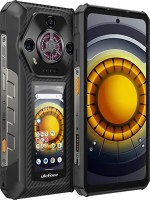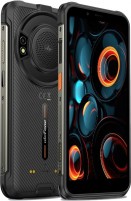Mobile Phones UleFone series Note (large screen)
UleFone Note
Initially, the Note line from the young Chinese brand UleFone included large-sized entry-level and mid-range smartphones, which were called phablets a few years ago. That is, these are large-sized smartphones with a massive display, reaching almost tablet dimensions. From a technical point of view, most UleFone Note representatives are simple models with modest equipment and an average check in the region of $100-150.
 |
Their equipment fully corresponds to the price: the display is far from the brightest and most colorful, HD resolution, not Full HD, the entry-level processor from MediaTek or Unisoc is usually responsible for speed, the amount of RAM can be from 2 to 4 GB, and the size of the internal repositories are highly dependent on the specific model. In some cases, this is 32 or 64 GB, in some modest 16 GB.
The quality and quantity of optical sensors also varies greatly. For example, the main bestseller of the Note 12P series has a triple camera with incomprehensible sensors, and the UleFone Note 13P that replaced it has a single camera, but with a Sony IMX350 sensor. Given the price, additional equipment here is not particularly pampering and is usually limited to a capacious battery, fifth-generation wireless receivers, a capacious battery (from 5000 to 7000 mAh) and a fingerprint scanner. In some models of 2022, you can find an NFC chip for contactless payment and pure Android OS.
In 2020, UleFone designers caught a new trend of miniaturization of smartphones and, in addition to the classic Note models, released several miniature smartphones that are not quite typical for this line, such as UleFone Note 6P and UleFone Note 8. In UleFone Note 6P, the screen diagonal is 6.1 inches, in UleFone Note 8, the screen was generally reduced to 5.5 inches, like the iPhone 12/13 mini. As planned by the manufacturer, both devices should attract people who prefer the old-fashioned way to manage a smartphone with one hand.



